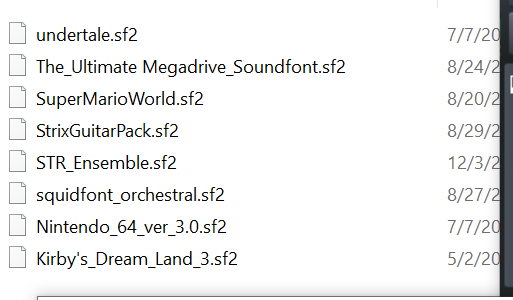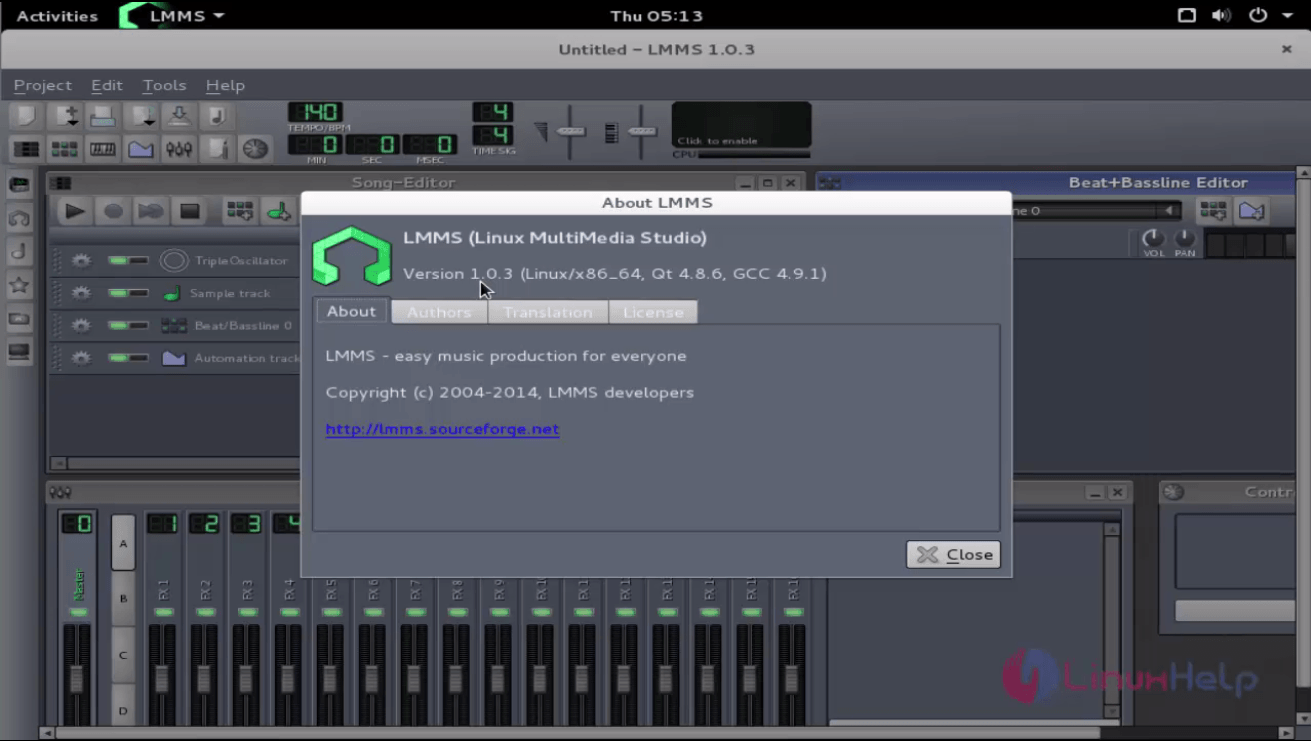

- #How to use sf2 files in lmms drivers
- #How to use sf2 files in lmms 32 bit
- #How to use sf2 files in lmms software
- #How to use sf2 files in lmms code
I was hoping to find a typo or a missing constructor somewhere, but the code looks much like the rest of the plugins. So at some point, it's like the BoolModel(s) are getting completely ignored. (and then the graphical objects are attached to this model linking the data as well as having a storage place for our XML data). From what I can see, the BoolModel is a GUI-less object model so that rendering can happen without the graphical objects be instantiated. What I can't wrap my head around is how this reverb and chorus is ever getting enabled to begin with. that the project has been modified.Īh, that makes much more sense. Thanks for testing this, greatly appreciated.ĭataChanged signal inform sets the dirty flag, ie. I downloaded and installed a snapshot of the latest master branch of Fluidsynth still the bug remains wav file also has the effects applied too.īefore I even drag & drop of sf2, the preset preview in the file browser also applies the chorus and reverb Also if i drag a soundfont which has chorus and reverb settings, they will be applied immediately without needing to use the sf2 player buttons.however if i use the instruments internal browser and load the same preset the bug does not occur. Rendering a project to an audio file will cause the soundfonts chorus and reverb to be applied without any user intervention concerning the gui. They can only be disabled by clicking and unclicking appropriate buttons in the SF2 player. Add notes to Song Editor piano roll for SF2 Player instrument.Browse to lmms-test.sf2 (pink folder icon) Create a new project, add a new SF2 Player instrument to Song Editor.Download lmms-test.sf2, a soundfont with chorus and reverb support.
#How to use sf2 files in lmms drivers
Therefore, the configuration programs for all three drivers above allow to select the default MIDI device driver and store that setting in the corresponding registry setting.

MS deleted the User Interface part for default MIDI device selection from the Sounds Control Panel in Windows Vista, 7 and 8 - however, the windows registry settings still exists. Oops, the link to the VST MIDI driver didn't survive the move. Its from the same author as the BASS MIDI driver. There is another MIDI driver ( VST MIDI driver ), which uses VST plugins instead of SoundFonts.

The two MIDI drivers I mentioned above use SoundFonts. There are many more SoundFonts available, as well as applications to create and edit SoundFonts. When selecting a SoundFont, I would recommend to start with the GeneralUser SoundFont by Christian Collins (see CoolSoft site for the link), because - in my opinion - its sounds are quite well balanced and can be used for classic and contemporary music. I haven't tested Windows 8 yet.ĭriver #2 has a nicer User Interface, but supports just one port (16 MIDI channels).ĭriver #1 is open source and supports two ports (2 x 16 MIDI channels).īoth drivers can be installed and used side-by-side with each other and the standard MS GS Synth.
#How to use sf2 files in lmms software
In other words, these two drivers are software replacements for the Wavetable MIDI hardware on earlier soundcards, but without their hardware limitations (number of voices, size of SoundFont).īoth drivers work in Windows XP, Vista, 7 (32 and 64 bit). These chips use Soundfonts (SF2 files), that contain the wavetables (audio samples) for the various instruments.
#How to use sf2 files in lmms 32 bit
I am using these two MIDI drivers on Windows XP Professional 32 bit and Windows 7 Ultimate 64 bit:īoth drivers are installed as MME (MS Multimedia Extension) MIDI drivers, just like the standard MS GS Wavetable Synth.īoth use the BASS audio library, which contains a software synthesizer, that emulates the EMU sound chip of Creative Soundblaster audio cards (and compatible hardware).


 0 kommentar(er)
0 kommentar(er)
